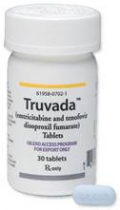Opinion AG CJEU: No SPC for active ingredients that are not mentioned in the words of the claims of the basis patent
25-04-2018 Print this page
Case C-121/17: Teva v Gilead. Opinion A-G Wathelet. Preliminary questions High Court of Justice of England and Wales, Chancery Division.
Patent Law - SPCs. Gilead markets an antiretroviral medicinal product called TRUVADA for the treatment of people with HIV. This medicinal product contains two active ingredients, tenofovir disoproxil (hereinafter "TD") and emtricitabine. Gilead obtained a marketing authorisation for this medicinal product ('the MA') issued by the European Medicines Agency (EMA) in 2005. Gilead is the holder of European patent EP 0915894 ("basic patent"). The patent expired on July 24, 2017 and convers a set of molecules that are useful for the therapeutic treatment of multiple viral infections in humans or animals, including HIV. In 2008, Gilead obtained SPC SPC/GB05/041 on the basis of claim 27 of the basic patent and the marketing authorisation for TRUVADA, which relates to a ‘composition containing [TD], optionally in the form of a pharmaceutically acceptable salt, hydrate, tautomer or solvate, together with Emtricitabine’. The applicants seek to market generic alternatives to TRUVADA on the market as soon as the basic patent expires and have brought an action before the referring court to challenge the validity of the SPC.
In order for Article 3(A) of the SPC Regulation for Medicinal Products to be satisfied according to the applicant, the product must be mentioned in the claims and, if the conclusion contains a functional definition, it must be ‘relate, implicitly but necessarily and specifically’ to that product'. Emtricitabine would not be mentioned at all in claim 27 and the words "other therapeutic ingredients" would not specify any active substance either structurally, functionally, or in any other way. According to Gilead, in order to comply with Article 3(A) it is necessary and sufficient that the product concerned falls within the scope of the protection of at least one conclusion of the basic patent by applying the rules concerning the scope of the protection. The combination of TD and Emtricitabine would fall within the scope of protection of Article 27 of the patent in accordance with Article 69 of the EPC and the protocol on its interpretation. The national court has therefore referred a question for a preliminary ruling on the criteria for determining whether 'the product is protected by a basic patent in force' within the meaning of Article 3 (a) of the SPC Regulation for Medicinal Products.
A-G Wathelet proposes that the CJEU should answer the question as follows:
"Article 3(a) of Regulation (EC) No 469/2009 of the European Parliament and of the Council of 6 May 2009 concerning the supplementary protection certificate for medicinal products precludes the grant of a supplementary protection certificate relating to active ingredients which are not specified in the wording of the claims of the basic patent. The fact that a substance or combination of substances falls within the scope of protection of the basic patent is a necessary, but not sufficient, requirement for it to constitute a product protected by a patent within the meaning of Article 3(a) of Regulation No 469/2009. A product is protected by a patent within the meaning of Article 3(a) of that regulation if, on the priority date of the patent, it would have been obvious to a person skilled in the art that the active ingredient in question was specifically and precisely identifiable in the wording of the claims of the basic patent. In the case of a combination of active ingredients, each active ingredient in that combination must be specifically, precisely and individually identifiable in the wording of the claims of the basic patent."
Read the conclusion here.

















